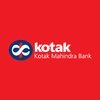Filter interviews by
Union Bank of India Interview Questions and Answers
33 Interview questions
Accounts payable involves managing a company's obligations to pay off short-term debts to its creditors.
Understanding invoices: Ensuring accuracy in invoices received from vendors.
Payment processing: Timely processing of payments to avoid late fees, e.g., using software like QuickBooks.
Reconciliation: Regularly reconciling accounts payable with vendor statements to ensure accuracy.
Compliance: Adhering to company p...
I have extensive experience in managing accounts payable processes, ensuring timely payments and accurate record-keeping.
Managed invoice processing for over 200 vendors, ensuring accuracy and timely payments.
Implemented a new software system that reduced invoice processing time by 30%.
Conducted regular audits of accounts payable records to ensure compliance and accuracy.
Collaborated with the procurement team to re...
To prepare for analyzing financial statements and balance sheets, one should have a strong understanding of accounting principles and financial ratios.
Understand basic accounting principles such as revenue recognition, accrual accounting, and matching principle.
Familiarize yourself with financial ratios like liquidity ratios, profitability ratios, and leverage ratios.
Learn how to interpret key financial statement ...
I stay updated through industry publications, attending conferences, networking with peers, and participating in online forums.
Subscribe to industry publications such as 'Accounts Payable News' and 'The Accounts Payable Network'
Attend conferences and seminars like 'AP & P2P Conference & Expo' to learn about the latest trends
Network with other professionals in the field through LinkedIn groups and industry events
Pa...
I have over 10 years of experience in financial management, including overseeing accounts payable processes.
Managed accounts payable department to ensure timely and accurate processing of invoices
Implemented cost-saving measures by negotiating vendor terms and discounts
Utilized financial analysis to identify trends and improve cash flow management
Collaborated with cross-functional teams to streamline accounts paya...
I implemented automated invoice processing systems and negotiated vendor discounts to improve efficiency and reduce costs.
Implemented automated invoice processing systems
Negotiated vendor discounts to reduce costs
Streamlined approval workflows for faster payments
Entries for receiving stock from vendors include debit to inventory and credit to accounts payable.
Debit inventory account for the value of stock received
Credit accounts payable for the same value
Record any additional charges or discounts separately
Prioritize payments by due date, importance, and available funds. Manage cash flow by forecasting, monitoring, and adjusting payment schedules.
Prioritize payments based on due dates to avoid late fees and maintain vendor relationships
Consider the importance of each payment to the business operations when deciding the order of payments
Manage cash flow by forecasting upcoming expenses and revenue, adjusting payment ...
LTV ratio in LAP refers to the Loan to Value ratio in Loan Against Property.
LTV ratio is calculated by dividing the loan amount by the market value of the property.
It helps in determining the risk associated with the loan.
A lower LTV ratio indicates lower risk for the lender.
For example, if a property is valued at $500,000 and the loan amount is $300,000, the LTV ratio would be 60%.
DSCR stands for Debt Service Coverage Ratio and ISCR stands for Interest Service Coverage Ratio.
DSCR measures a company's ability to pay its debt obligations with its operating income.
A DSCR of 1 means the company is just able to cover its debt payments, while a DSCR above 1 indicates the company has more income than debt obligations.
ISCR measures a company's ability to pay its interest expenses with its operating...
Union Bank of India Interview Experiences
34 interviews found
I applied via Newspaper Ad and was interviewed in May 2024. There were 4 interview rounds.
(4 Questions)
- Q1. Your experience in financial management and its relation to accounts payable process ?
- Ans.
I have over 10 years of experience in financial management, including overseeing accounts payable processes.
Managed accounts payable department to ensure timely and accurate processing of invoices
Implemented cost-saving measures by negotiating vendor terms and discounts
Utilized financial analysis to identify trends and improve cash flow management
Collaborated with cross-functional teams to streamline accounts payable p...
- Q2. How you utilized your accounting expertise to streamline accounts payable procedures in your previous roles ?
- Ans.
I implemented automated invoice processing systems and negotiated vendor discounts to improve efficiency and reduce costs.
Implemented automated invoice processing systems
Negotiated vendor discounts to reduce costs
Streamlined approval workflows for faster payments
- Q3. How do you updated in industry trends& best practices in accounts payable management?
- Ans.
I stay updated through industry publications, attending conferences, networking with peers, and participating in online forums.
Subscribe to industry publications such as 'Accounts Payable News' and 'The Accounts Payable Network'
Attend conferences and seminars like 'AP & P2P Conference & Expo' to learn about the latest trends
Network with other professionals in the field through LinkedIn groups and industry events
Partici...
- Q4. Can you talk about a challenging situation you faced at work and how you overcame it ?
- Ans.
I faced a challenging situation when a major client threatened to withdraw their business due to a service issue.
Identified the root cause of the issue by conducting a thorough investigation
Developed a plan to address the client's concerns and prevent similar issues in the future
Communicated transparently with the client, acknowledging the mistake and outlining steps taken to rectify it
Offered additional incentives to ...
(4 Questions)
- Q1. What is journal entry. What is its importance.
- Ans.
Journal entry is a record of a financial transaction in a company's accounting system.
Journal entry is used to record the financial effects of business transactions.
It consists of a debit entry and a credit entry, with an explanation of the transaction.
Journal entries are important for maintaining accurate financial records and preparing financial statements.
They help in tracking the flow of money in and out of the bus...
- Q2. If we receive stock from vendors what are the entries to be made ?
- Ans.
Entries for receiving stock from vendors include debit to inventory and credit to accounts payable.
Debit inventory account for the value of stock received
Credit accounts payable for the same value
Record any additional charges or discounts separately
- Q3. How do you organize and manage your time between various tasks and projects ?
- Ans.
I prioritize tasks based on deadlines and importance, utilizing tools like calendars and to-do lists.
I prioritize tasks based on deadlines and importance
I utilize tools like calendars and to-do lists to keep track of tasks
I allocate specific time blocks for different projects to ensure progress
I delegate tasks when necessary to manage workload effectively
- Q4. How do you prioritize payments and manage cash flow effectively in accounts payable operations?
- Ans.
Prioritize payments by due date, importance, and available funds. Manage cash flow by forecasting, monitoring, and adjusting payment schedules.
Prioritize payments based on due dates to avoid late fees and maintain vendor relationships
Consider the importance of each payment to the business operations when deciding the order of payments
Manage cash flow by forecasting upcoming expenses and revenue, adjusting payment sched...
(2 Questions)
- Q1. What motivated you to apply for accounts payable executive ?
- Ans.
I was motivated to apply for the accounts payable executive position due to my strong background in finance and passion for streamlining processes.
Strong background in finance and accounting
Passion for streamlining processes and improving efficiency
Opportunity to utilize my skills and experience in a new role
Desire for career growth and advancement within the organization
- Q2. How do you balance your work life and personal life?
- Ans.
I prioritize tasks, set boundaries, delegate when necessary, and make time for self-care.
Prioritize tasks based on urgency and importance
Set boundaries by establishing work hours and sticking to them
Delegate tasks to team members to avoid burnout
Make time for self-care activities such as exercise, hobbies, and spending time with loved ones
(2 Questions)
- Q1. Job Location you prefer
- Ans.
I prefer a location that fosters professional growth and community engagement, ideally in a vibrant urban setting.
Proximity to clients: Being in a central location allows for easier access to clients and stakeholders, enhancing relationship management.
Access to resources: Urban areas typically offer better access to financial resources, networking opportunities, and industry events.
Community involvement: I value being ...
- Q2. Remuneration you opt for ?
- Ans.
I'm seeking a competitive salary that reflects my experience and the value I bring to the bank, along with performance-based incentives.
I expect a salary in the range of $100,000 to $120,000, based on industry standards for senior bank managers.
In addition to base salary, I value performance bonuses that reward exceeding targets, such as a 10-15% bonus based on annual performance.
I also appreciate comprehensive benefit...
Interview Preparation Tips
- Banking Operations
- Accounts Payable
- Accouns Receivable
- Bank Balances
- Bank Reconciliation
I applied via Company Website and was interviewed in Sep 2024. There were 2 interview rounds.
I am want bank tex book.
(3 Questions)
- Q1. I want mobile phon give you is?
- Q2. Is you give me laptop?
- Q3. Is you give now salary?
Interview Preparation Tips
I applied via Campus Placement
(2 Questions)
- Q1. Tell me about yourself
- Q2. How do you want to see yourself
- Ans.
I envision myself as a proactive leader, fostering team growth and driving innovative solutions for organizational success.
I want to lead a team that collaborates effectively, like organizing regular brainstorming sessions to encourage idea sharing.
I aim to enhance my skills through continuous learning, such as pursuing relevant certifications or attending workshops.
I aspire to contribute to strategic decision-making, ...
Interview Preparation Tips
Reasoning, quantitative skills, and English language proficiency.
(1 Question)
- Q1. How should one prepare for analyzing financial statements, balance sheets, and assessing limits?
- Ans.
To prepare for analyzing financial statements and balance sheets, one should have a strong understanding of accounting principles and financial ratios.
Understand basic accounting principles such as revenue recognition, accrual accounting, and matching principle.
Familiarize yourself with financial ratios like liquidity ratios, profitability ratios, and leverage ratios.
Learn how to interpret key financial statement compo...
I appeared for an interview in Apr 2025, where I was asked the following questions.
- Q1. How would you describe your experience?
- Ans.
I have extensive experience in logistics and communication, ensuring timely and efficient delivery of messages and packages.
Worked as a courier for two years, managing daily routes and ensuring on-time deliveries.
Developed strong organizational skills by coordinating multiple deliveries simultaneously.
Utilized GPS and mapping software to optimize delivery routes, reducing travel time by 20%.
Communicated effectively wit...
- Q2. How many years of experience do you have working in the banking sector?
- Ans.
I have over five years of experience in the banking sector, focusing on customer service and financial transactions.
Worked as a teller for three years, handling daily transactions and customer inquiries.
Assisted in loan processing, gaining insights into credit assessments and approvals.
Participated in training sessions for new banking software, enhancing operational efficiency.
Collaborated with the compliance team to e...
- Q3. What are your ambitions within the banking sector?
- Ans.
I aspire to grow within the banking sector, focusing on customer service, financial analysis, and leadership roles.
Develop expertise in financial products to better assist clients, similar to how I helped a friend choose the right investment plan.
Aim for a role in financial analysis to contribute to strategic decision-making, like analyzing market trends for a previous employer.
Pursue leadership opportunities to mentor...
- Q4. What are the best practices for caring for elderly individuals?
- Ans.
Caring for elderly individuals involves compassion, respect, and tailored support to enhance their quality of life.
Maintain regular communication to foster emotional connections.
Encourage physical activity, such as walking or gentle stretching, to promote mobility.
Provide nutritious meals and hydration to support overall health.
Assist with medication management to ensure adherence to prescribed treatments.
Create a safe...
- Q5. What should be given first preference?
- Ans.
First preference should be given to tasks that ensure timely delivery and customer satisfaction, prioritizing urgent needs.
Prioritize urgent deliveries, e.g., time-sensitive documents.
Consider customer preferences, e.g., delivering to preferred locations.
Evaluate the importance of the items being delivered, e.g., medical supplies over regular mail.
Plan routes efficiently to save time and resources.
I applied via Recruitment Consulltant and was interviewed in Jan 2024. There was 1 interview round.
(5 Questions)
- Q1. My details and experience
- Q2. How many experience
- Q3. Salary details adding
- Q4. Salary by hand 23k
- Q5. Prajent work union Bank of India service Ltd
Interview Preparation Tips
I applied via Referral and was interviewed in Sep 2023. There were 5 interview rounds.
Self intrusion, About study
Credit card features and benefits
(1 Question)
- Q1. What is banking sector
- Ans.
Banking sector refers to the industry that provides financial services such as accepting deposits, lending money, and facilitating transactions.
Banks are financial institutions that offer services such as savings accounts, loans, and credit cards.
The banking sector plays a crucial role in the economy by providing liquidity and financial stability.
Examples of banking institutions include commercial banks, investment ban...
(6 Questions)
- Q1. How to convince New customer
- Ans.
Convince new customers by highlighting benefits, offering incentives, providing excellent customer service, and building trust.
Highlight the benefits of the credit card such as rewards, cashback, and travel perks.
Offer incentives like sign-up bonuses, 0% APR introductory rates, and waived annual fees.
Provide excellent customer service by being responsive, helpful, and transparent.
Build trust by showcasing positive cust...
- Q2. What about card features
- Ans.
Card features are essential for attracting customers and providing value.
Card features should align with customer needs and preferences
Competitive rewards programs can attract and retain customers
Security features like fraud protection and alerts are crucial for customer trust
Concierge services and travel benefits can differentiate a card in a crowded market
- Q3. What is card protection plan
- Ans.
A card protection plan is a service offered by credit card companies to protect cardholders from unauthorized transactions, fraud, and theft.
Provides coverage for unauthorized transactions on the card
Offers protection against fraud and theft
May include services such as card replacement and emergency cash advance
Typically involves a monthly or annual fee for enrollment
- Q4. Before experience in credit card job role
- Q5. Are you interested in banking sector
- Q6. Why are you select this job
Selling and calling to talk customer
Interview Preparation Tips
- Current affairs
- Banking
- Computer Operating
I applied via Company Website and was interviewed in May 2024. There was 1 interview round.
(1 Question)
- Q1. Refer MSME book iibf
- Ans.
MSME book by IIBF provides comprehensive information on Micro, Small and Medium Enterprises.
MSME book by IIBF covers various aspects of MSME sector such as financing, credit assessment, risk management, etc.
It also includes case studies and practical examples to help understand the concepts better.
The book is a valuable resource for credit managers looking to enhance their knowledge and skills in managing MSME credit.
I...
Interview Preparation Tips
I applied via Walk-in and was interviewed in Feb 2024. There were 2 interview rounds.
Reasoning coding decoding number series blood relations
(11 Questions)
- Q1. Tell me about your self
- Q2. Why did you choose in this company
- Q3. What are you greatest strength and weaknesses
- Q4. What are you looking for a change
- Q5. Tell me about the gap in your resume
- Q6. How many years of experience you have And Which domain
- Q7. How much package you get in your previous company
- Q8. Now how much package you are expecting
- Q9. In this company not paid that much of packages
- Q10. Do you have previous company experience letters And Payslip and Bank statement
- Q11. You submitted your payslip and Bank statement

Computer work and clerk work
(5 Questions)
- Q1. Should ill get selected
- Q2. When and for what posf Ill be there
- Q3. Whenever for interview
- Q4. Iam getting now 14000salaryin union Bank of india
- Q5. And salary will be there but howmuch
Top trending discussions






Union Bank of India Interview FAQs
Some of the top questions asked at the Union Bank of India interview -
The duration of Union Bank of India interview process can vary, but typically it takes about less than 2 weeks to complete.
Tell us how to improve this page.
Union Bank of India Interviews By Designations
- Union Bank of India Credit Manager Interview Questions
- Union Bank of India Relationship Executive Interview Questions
- Union Bank of India Assistant Manager Interview Questions
- Union Bank of India Management Trainee Interview Questions
- Union Bank of India Head/VP/GM-Legal Interview Questions
- Union Bank of India Customer Service Associate Interview Questions
- Union Bank of India Manager Interview Questions
- Union Bank of India Financial Analyst Interview Questions
- Show more
Interview Questions for Popular Designations
Overall Interview Experience Rating
based on 46 interview experiences
Difficulty level
Duration
Interview Questions from Similar Companies
Union Bank of India Reviews and Ratings
based on 722 reviews
Rating in categories
|
Senior Manager
271
salaries
| ₹10 L/yr - ₹35 L/yr |
|
Manager
238
salaries
| ₹7 L/yr - ₹24 L/yr |
|
Assistant Manager
178
salaries
| ₹5 L/yr - ₹17 L/yr |
|
Chief Manager
174
salaries
| ₹13 L/yr - ₹51 L/yr |
|
Branch Manager
88
salaries
| ₹7 L/yr - ₹25 L/yr |

HDFC Bank

ICICI Bank

Axis Bank

Kotak Mahindra Bank
- Home >
- Interviews >
- Union Bank of India Interview Questions













